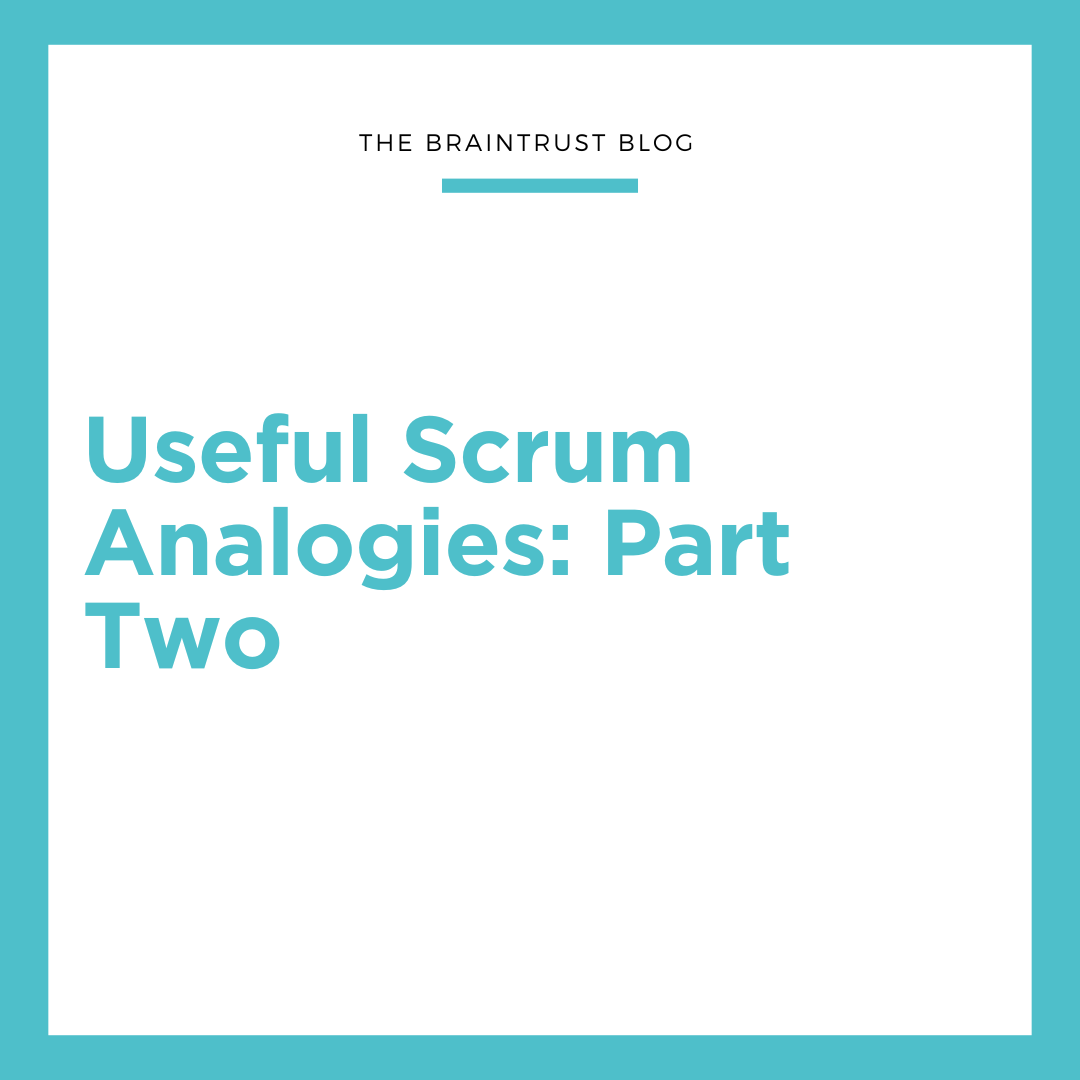This is the final installment of the guest blog submissions Jonathan Rabon has been writing for us. He is talking about the new process development he and Brian Rabon have been working on the past month.
This past weekend I attended a 2-day Certified Scrum Master (CSM) course in Tulsa, Oklahoma, led by Brian M. Rabon, CST, PMP. I thoroughly enjoyed the learning experience, was challenged by the material, and I gained new insights into Scrum and Agile practices. Giving up a weekend and traveling was emotionally and physically draining; however, the experience was more than worth it. I met course participants from as far away as Colorado and Texas from a variety of software companies and also one from a University. As a group, we grew together in our understanding and practice of Scrum process, and my desire to integrate psychological methods and Scrum practices was strengthened.
Here are some of the insights that I gained through the experience, along with some foreshadowing of what I plan to do with them:
(1) High bandwidth communication (i.e., face-to-face interactions) always trumps low bandwidth (emails, phone calls) for effectiveness. There is an astounding amount of information that is communicated in face-to-face interactions that is lost in more impersonal attempts at communication. I am trained in many ways to maximize communication, and I look forward to sharing my learning.
(2) Visual and physical based methods of organization (using sticky notes, white boards, etc.) are far more effective for encouraging self-management and self-organization in Scrum development teams than a long series of emails, phone calls, or leaving notes. So much time is saved when the status of each team member is placed together on a Scrum board or on any other organizing board. This eliminates the need for other people inside or outside of the team wondering who is working on what, and what stage of completion each task is at currently. I plan on using similar methods for communicating personality styles of each development team member in my methods.
(3) “Ask the team!” This is my new Scrum mantra. When in doubt, ask the team to determine what they want to do and how they want to solve a problem. This encourages ownership, motivation, and creative problem-solving instead of passive-aggressiveness and inefficiency. People don’t want to be oppressed by the decision making of micro-managers. Teams function so much better when each team member feels empowered by the ability to choose. Choice leads to a sense of ownership of projects and a more rewarding job. I plan to use personality testing results to empower development team members to have greater insight into the way they think, feel, and behave and to grow in whatever areas they deem appropriate.
(4) Teams comprised of people of different perspectives with different ways of thinking and perceiving, bring much greater levels of creative problem-solving than teams of similar ways of thinking. Also, when teams push themselves much farther than they previously considered possible they are far more likely to meet those seemingly unrealistic goals than teams that set the bar much lower. Growth can indeed be exponential when creativity is high and the team members are motivated. I plan to explore the personality style diversity on teams and have them integrate those findings into their daily work. By understanding the personality style diversity on their teams, developers will be challenged to reach new levels of problem-solving and creativity.
Well, now it’s time to get some rest and get back to the day job. Stay tuned for my next posting, coming soon.



